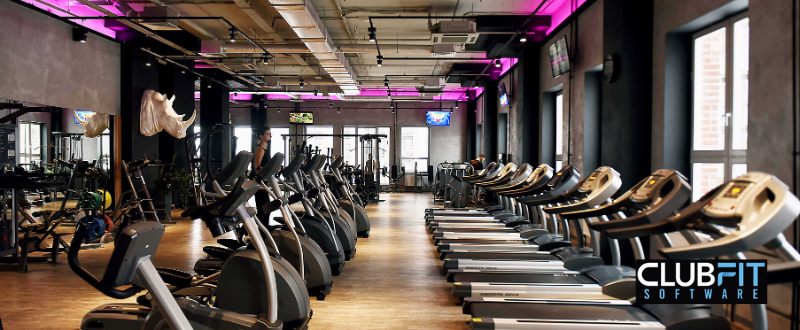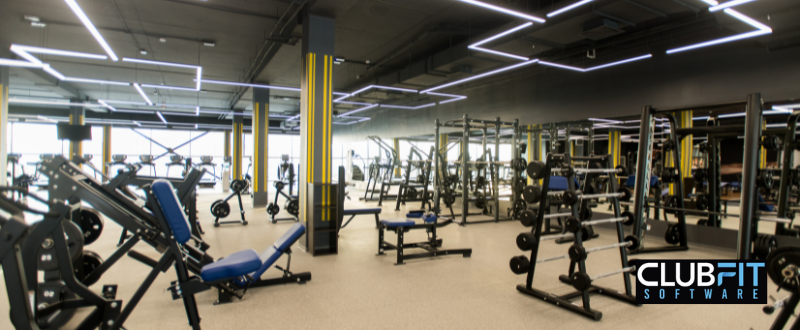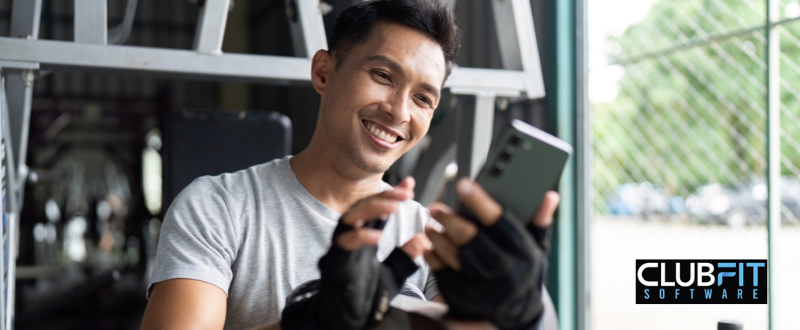
Opening a gym in Australia is an exciting venture — one that blends passion for fitness with the potential for a profitable business. But before signing a lease or buying equipment, it’s crucial to understand what it truly costs to get started.
The reality is that gym setup costs vary widely depending on location, size, type of facility, and level of service. A small personal training studio in suburban Brisbane might launch for under A$100,000, while a full-service gym in Sydney could easily exceed A$800,000 once you factor in rent, fit-out, and staffing.
In this article, we’ll break down the real-world costs of opening a gym in Australia — from equipment and rent to software, licences, and ongoing operations.
Disclaimer: The following information is based on Australian market research conducted in 2025. While the estimates are drawn from credible local sources, actual costs can vary significantly by city, property type, and business model. Always obtain professional financial and legal advice before making investment decisions.
Key Takeaways
- Startup costs vary widely — expect anywhere from A$100,000 to A$500,000+ depending on gym size, location, and equipment quality.
- Rent and fit-out are your biggest expenses, averaging A$1,500–A$3,000 per m² for a full commercial setup.
- Equipment packages typically range from A$50,000 to A$200,000, but leasing refurbished gear can save up to 40%.
- Ongoing monthly costs include staff wages, utilities, marketing, and software, totalling A$5,000–A$25,000+ for most gyms.
- Don’t forget hidden costs like insurance, maintenance, and music licensing through OneMusic Australia.
- Plan for 3–6 months of cash flow reserves to cover early operational losses and seasonal slowdowns.
- Smart management tools like Clubfit Software help reduce admin time, automate billing, and improve member retention.
Always consult professionals before signing leases or financial agreements — gym costs can shift quickly with market changes.
Key Startup Costs (The Essentials)
The initial investment to open a gym in Australia typically falls between A$100,000 and A$500,000, though high-end facilities can exceed A$1 million. Here’s a breakdown of where most of that money goes.
Leasing or Buying a Space
Your premises will be one of your largest upfront costs. Rent depends heavily on size and location:
- Suburban/industrial areas: around A$400–A$800 per m² annually
- Inner-city or premium retail spaces: A$1,000–A$3,000+ per m² annually
For a 250 m² boutique studio, expect to pay A$100,000–A$200,000 per year in rent, not including fit-out.
If you’re buying property instead of leasing, commercial real estate prices vary widely, but initial outlay and ongoing maintenance costs can far exceed leasing in capital cities.
When budgeting for rent, don’t forget to include bond deposits, fit-out contributions, and council approvals, which can add several thousand dollars before you even open your doors.
Equipment and Fit-Out
Equipment and fit-out costs depend on the type of gym you’re building.
- Personal training studios (80–150 m²): A$50,000–A$120,000
- Boutique fitness spaces (150–250 m²): A$150,000–A$300,000
- Full-service gyms (300–600 m²): A$400,000–A$900,000+
Australian commercial fit-outs now average between A$1,500 and A$3,000 per m², which includes flooring, lighting, mirrors, changerooms, signage, and ventilation systems. Flooring alone typically costs A$30–A$100 per m² depending on material quality.
As for equipment, a solid starter package might include:
- Cardio machines (treadmills, bikes, rowers): A$30,000–A$80,000
- Strength machines and racks: A$40,000–A$100,000
- Free weights, benches, accessories: A$10,000–A$30,000
Opting for refurbished or leased equipment can cut initial costs by 30–40%. However, ensure your supplier offers local warranties and maintenance support — imported equipment can come with expensive freight and repair delays.

Licensing, Permits, and Registrations
Before your gym can legally operate in Australia, you’ll need to handle a few key registrations and compliance steps.
- ABN (Australian Business Number): Free via the Australian Business Register
- GST registration: Required if annual turnover exceeds A$75,000
- Business name (ASIC): A$45 for 1 year or A$104 for 3 years
- Company registration (Pty Ltd): Around A$611
- Council permits and zoning: Vary by local government area — check for gym/fitness usage approval
- Music licensing: OneMusic Australia requires a licence for background and class music, typically A$400–A$650 per year depending on member count
- Public liability insurance: Starts at around A$39/month for small studios, scaling up for larger operations
These costs may seem minor compared to rent or equipment, but they’re essential for compliance. Skipping or delaying them can result in fines or forced closures — so it’s best to budget early and get professional advice on local regulations.
Operational Costs (Monthly and Ongoing)
Once your gym is up and running, you’ll face ongoing monthly expenses that are just as important to plan for as your startup costs. These include wages, utilities, maintenance, software, and marketing — all of which can add up quickly if not managed well.
Staffing and Wages
Staff are one of your biggest recurring costs. According to the Fitness Industry Award (MA000094), the average hourly wage for fitness instructors and personal trainers in 2025 ranges from A$28 to A$38 per hour, depending on qualifications and experience. Gym managers and reception staff usually earn between A$55,000 and A$70,000 annually.
If you employ several trainers, receptionists, and cleaning staff, expect payroll (including superannuation and payroll tax) to account for 30–40% of your total monthly expenses. Many gym owners offset this by hiring part-time or contract trainers who pay rent to use the facility.
Utilities and Maintenance
Electricity, air conditioning, water, and internet services are easy to underestimate. Larger gyms can spend A$1,000–A$3,000 per month on electricity alone, especially those operating 24/7 with air conditioning and lighting running continuously. Cleaning services and general maintenance can add another A$500–A$2,000 per month, depending on size and frequency.
Software and Payment Processing
Running a gym today means handling memberships, class bookings, and billing — and doing it efficiently. Gym management platforms such as Clubfit Software help automate these tasks, reducing administrative time and preventing billing errors.
Payment processing fees in Australia generally fall within:
- Stripe: 1.70–1.75% + A$0.30 per domestic card transaction
- Square: 2.6% + A$0.15 for in-person payments
These small percentages add up fast, so it’s worth comparing providers and negotiating lower fees as your member base grows.
Marketing and Advertising
Gyms need a steady flow of new members to thrive. Budget around A$1,000–A$5,000 per month for digital marketing. Facebook and Instagram ads in Australia typically cost A$10–A$20 per 1,000 impressions (CPM), while Google Ads can run A$1–A$3 per click depending on competition in your area.
Don’t forget organic marketing — maintaining an active presence on social media, Google Business Profile, and email newsletters can bring consistent leads without major ad spend.
Additional (Often Overlooked) Costs
Even with careful planning, there are several hidden or underestimated expenses that can catch new gym owners off guard. Here are some to keep in mind:
Insurance
Beyond public liability, most gyms need a combination of policies for full protection:
- Property and equipment insurance – protects against fire, theft, or damage.
- Professional indemnity – covers trainers giving advice or instruction.
- Workers’ compensation – required for employees in all states.
These can collectively range from A$150 to A$500 per month, depending on coverage levels.
Repairs and Equipment Replacement
Gym equipment wears out over time, especially cardio machines. Budget at least 5–10% of your equipment cost annually for maintenance or replacements. For example, a gym with A$200,000 worth of equipment should set aside A$10,000–A$20,000 per year for upkeep.
Accounting, Legal, and Professional Fees
Setting up a gym correctly requires professional support.
- Accountant or bookkeeper: A$150–A$300 per month
- Legal consultation (lease, contracts): A$500–A$1,000 one-off
- Business consultant or marketing strategist: optional but helpful early on
Cash Flow Buffer
It’s common for new gyms to operate at a loss for the first few months. Keeping a cash flow buffer of 3–6 months’ expenses is essential to stay afloat while building your membership base. For a medium-sized facility, that can mean an extra A$30,000–A$100,000 in working capital.
Music Licensing and Community Engagement
If your gym plays music or runs group classes, OneMusic Australia requires a licence. Expect to pay around A$41 per member per year (capped at 100 members) or a flat A$440–A$650 per year for smaller studios.
Additionally, community events, launch promotions, and local sponsorships are often overlooked in early budgeting — set aside A$500–A$1,000 per month for outreach to help build brand loyalty.
Sample Budget Breakdown
To put all these numbers into perspective, here’s a look at estimated startup and operating costs for different types of gyms in Australia. These figures are based on 2025 market research and current industry averages.
| Gym Type | Estimated Startup Cost | Monthly Operating Cost | Typical Size | Example Notes |
| Small PT Studio | A$50,000 – A$100,000 | A$5,000 – A$10,000 | 80–150 m² | Ideal for personal trainers with a small client base; minimal equipment, often rented spaces |
| Boutique Fitness Studio | A$150,000 – A$300,000 | A$10,000 – A$20,000 | 150–250 m² | Includes group classes, branded experience, specialised equipment |
| Full-Service Gym | A$400,000 – A$900,000+ | A$25,000+ | 300–600 m² | Full range of cardio, strength, and amenities; higher rent and staffing costs |
Important: These are general estimates only. Costs vary widely based on location (e.g. Sydney CBD vs. regional Queensland), property condition, design ambitions, and the level of tech integration.
Also note that fit-out costs are often the single biggest factor. In Australia, gym fit-outs now average A$1,500–A$3,000 per m², meaning even a modest 200 m² facility could easily cost A$300,000–A$600,000 once flooring, HVAC, changerooms, mirrors, and branding are included.
Beyond that, you’ll want to allocate funds for working capital — the buffer that covers early wages, rent, and marketing before revenue ramps up. Most new gyms should plan for 3–6 months of expenses on hand before opening.

Cost-Saving Tips for New Gym Owners
Opening a gym is a major investment, but there are smart ways to keep costs under control — especially during your first year of operation.
1. Lease Refurbished Equipment
High-quality refurbished gym equipment can save you 30–40% compared to new machines. Many Australian suppliers offer leasing or rent-to-own plans, which reduce upfront spending while preserving cash flow. Just be sure to buy from reputable providers who offer warranties and service contracts.
2. Negotiate Flexible Lease Terms
Commercial landlords often prefer long-term tenants and may offer rent-free periods (1–3 months) or fit-out contribution allowances. Negotiating these incentives can dramatically reduce your opening costs. Always review lease agreements with a lawyer before signing to avoid hidden costs like maintenance fees or restrictive clauses.
3. Start Small — and Scale Gradually
Rather than launching with a massive facility, consider starting with a smaller studio or hybrid model. This allows you to test your business model, build a loyal member base, and expand later when you have predictable cash flow. Many successful gym brands in Australia began with 100–150 m² spaces before scaling.
4. Go Digital to Reduce Admin Overhead
Modern gym management systems — like Clubfit Software — help streamline bookings, billing, and communication. Automating daily operations can cut down on admin hours, eliminate missed payments, and give members a smoother experience. Over time, this can save thousands of dollars annually.
5. Use Strategic Marketing Instead of Big Ad Spends
Paid ads are important, but organic marketing and local engagement are often more effective for gyms.
- Build partnerships with nearby cafés or health clinics.
- Offer free community classes or open days.
- Encourage members to share testimonials or tag your gym on social media.
Word-of-mouth remains one of the most powerful — and cost-efficient — marketing tools in the fitness industry.
6. Monitor Your Cash Flow Weekly
It’s easy to underestimate ongoing costs, especially in the early months. Setting up a weekly cash flow review helps track spending, spot trends, and avoid budget shocks. Many gym owners use software tools or accountants to monitor key financial indicators like member churn, revenue per member, and profit margins.
Common Mistakes to Avoid
Even with good planning, many first-time gym owners run into the same financial and operational pitfalls. Learning from these can save you significant time, money, and stress.
1. Underestimating Ongoing Expenses
Startup costs often get most of the attention, but the monthly running costs — rent, wages, marketing, and utilities — can quickly erode profits if not tracked closely. A gym that looks profitable on paper can run into trouble within six months without a solid cash flow plan.
2. Over-Investing in Equipment Too Early
It’s tempting to buy every new machine on the market, but over-equipping can sink your budget before you’ve built your member base. Start with essential, versatile gear and expand once your gym’s revenue justifies the investment. Members care more about atmosphere, cleanliness, and community than the number of machines.
3. Ignoring Marketing or Relying Only on Ads
Some gym owners assume that simply opening the doors will bring members — but consistent marketing is key. Avoid the trap of spending big on one-off ad campaigns and neglecting follow-up engagement. Sustainable growth comes from a mix of digital marketing, community outreach, and referral programs.
4. Not Preparing for Seasonality
Gym attendance often dips during holidays or mid-year. Without preparation, that can create serious revenue gaps. Build seasonal offers, flexible memberships, or online programs to keep income consistent throughout the year.
5. Skipping Professional Advice
DIY business setup might seem cost-effective, but missing key legal, tax, or compliance steps can cost much more later. Always consult professionals — especially when reviewing commercial leases, structuring your business, or setting up insurance.
Final Thoughts
Opening a gym in Australia requires careful planning, disciplined budgeting, and a realistic view of both upfront and ongoing costs. From rent and equipment to wages, marketing, and compliance, the financial picture is complex — but manageable with the right preparation.
A small personal training studio can launch for under A$100,000, while a large, fully equipped facility could exceed A$800,000. Whatever your budget, success depends on strong financial control, community engagement, and smart use of technology to streamline operations.
Modern gym management tools like Clubfit Software make it easier to handle memberships, automate payments, and monitor performance — giving owners the data and control they need to grow sustainably.
Disclaimer: The figures provided in this article are based on 2025 Australian market research and industry averages. Actual costs can vary significantly depending on location, property condition, business model, and supplier pricing. This content is for general informational purposes only and should not be taken as financial or legal advice. Always seek guidance from qualified professionals before starting your business.
FAQ
How much money do I need to start a gym in Australia?
Most new gyms in Australia require between A$100,000 and A$500,000 to open, depending on the size and concept. A small personal training studio might cost closer to A$80,000, while a full-service gym with premium equipment and amenities could exceed A$800,000. Rent, fit-out, and equipment are usually the biggest expenses.
What is the biggest cost when opening a gym?
The fit-out and premises are typically the largest expenses. Commercial fit-outs in Australia average A$1,500–A$3,000 per m², covering flooring, lighting, HVAC, mirrors, and changerooms. The second biggest cost is usually equipment, followed by rent and staffing.
How can I reduce startup costs when opening a gym?
You can reduce costs by leasing refurbished equipment, negotiating flexible lease terms, and starting with a smaller space before expanding. Many gym owners also save time and money by using gym management software like Clubfit Software to automate billing and reduce admin overhead.
Do I need a licence to play music in my gym?
Yes. In Australia, gyms must hold a OneMusic Australia licence if they play background music or use music in classes. Fees start around A$400 per year for smaller studios and vary based on member numbers and usage type.
How long does it take for a new gym to become profitable?
Most gyms take 6 to 12 months to reach profitability. It depends on how quickly memberships grow and how well expenses are managed early on. Having 3–6 months of cash flow saved before opening gives you the best chance to cover costs while your community builds.
What ongoing costs should gym owners expect?
Common ongoing expenses include rent, staff wages, utilities, cleaning, marketing, software subscriptions, and insurance. For most facilities, these total between A$5,000 and A$25,000+ per month, depending on size and location.
What our customers are saying
We recently converted to Clubfit and love that the system gives us end to end control of our membership experience from a single platform, from billing to full member management. The Clubfit team are enthusiastic and easy to work with, always seeking feedback to continually develop the system.
 Jindalee Fitness
Jindalee FitnessA six year search led us to Clubfit. The software is easy to use and has saved us six figures annually.
It has allowed us to take total control of our membership base; both from a billing and service standpoint. The software allows us to communicate with our members more effectively, leading to happier members and ultimately, better retention. The Clubfit team are extremely receptive to user feedback and are constantly fine tuning their product / tech. They were also able to effectively and accurately migrate 20+ years of past and present member data from our old software.
Clubfit has made a significant difference on the way we run our business.
The user friendly software has allowed us to save time and we have seen a remarkable increase in new member sign ups. We now only operate from one software instead of two…no more going back and forth!
The support Clubfit offers is the best we have ever dealt with and we are amazed with how quickly they respond. This is what companies should strive towards.
Get in touch
Book a free, personalised demo
See how Clubfit can empower your fitness business with its revolutionary approach to member management and guarantees to increase your revenue.
Request Demo
"*" indicates required fields



